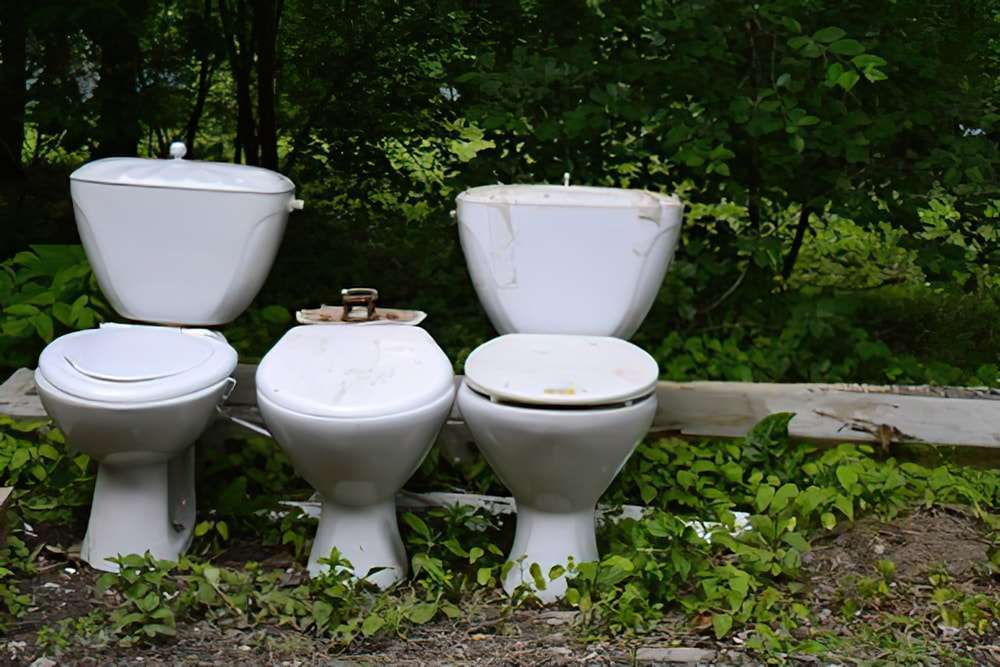When was the last time you thought about replacing your toilet? While toilets are built to last, they aren’t indestructible. Knowing how often a toilet should be replaced can save you from unexpected plumbing issues and help maintain a more efficient home.
In this post, we’ll walk you through all the signs signalling its time for a toilet replacement.
Too Old
Consider your toilet’s age when deciding on getting a new replacement. In general, most toilets can last 50 years. But, this guideline depends on various factors.
For instance, if the toilet is both well used and maintained, it can last a long while. If it was not properly cared for, or installed incorrectly, it may have a short lifespan.
You can check the date of when your toilet was manufactured by looking for a date stamp found at the top of the tank. If a date cannot be found, find and take down the model number.
You can then either contact or visit the manufacturer’s website. They likely have available a record of past product models you can refer to.
Another point to consider – all toilets are not guaranteed to make it to 50 years. Even if you have a relatively new toilet, say a decade or two in age, it may be time to replace it.
There are many reasons for this. For instance, your three-decade old toilet may simply be too outdated for use in a modern home today.
Consumes Too Much Water
One factor to consider when deciding whether to replace your toilet is water efficiency. The older the toilet, the more water it uses.
Toilets manufactured prior to 1982 can use 5 to 7 gallons of water per flush. This means on average, a household in the 80s would be using 48 gallons of water daily.
Since then, new standards have been set in place for toilets. From 1992 onwards, toilets use 1.6 gallons per flush. This adds up to about 9.1 gallons of water used by the average household.
By switching to a modern toilet, you would be saving about 5 gallons of water each flush. When looking for a new toilet, consider WaterSense labeled products.
WaterSense products are U.S. Environmental Protection Agency (EPA) certified to guarantee high water saving and performance standards.
Visually Damaged
Toilets are made of porcelain for a good reason. This material is waterproof, sanitary, and durable. There is a downside to all this however. Porcelain can be susceptible to cracks.
Hairline cracks and fractures may not seem like much, but overtime, they can grow. A single crack can significantly weaken a toilet’s durability.
Always be on the lookout for cracks and leaks wherever you clean your toilet. Inspect the wax sealing at the bottom, around your toilet’s base.
Check the intake pipe behind the bowl. Look both inside and outside of the tank and bowl. Some cracks and leaks can easily be repaired without the need to replace the entire toilet.
If you notice a crack that is actively leaking, you must seek a replacement as soon as possible. A damaged toilet will do more than increase your water bill. Soon enough, you may be dealing with a soggy bathroom floor as well.
Always Clogs
A toilet clog every once in a while is perfectly fine. This is completely normal. How often a toilet clogs depends on a variety of things.
For instance, the strength of the flush, condition of drain pipes, and what you’re flushing are all factors.
If you’re experiencing a clog once a month, it may be due to a build up of mineral deposits near the top of the drain. These deposits may form inside the pipe too.
Once formed, they will obstruct the flow, making it harder for both water and waste to pass. With older or weak flush toilets, the minerals cannot be washed away.
Consider having your drain pipes professionally cleaned before replacing your toilet. If your toilet is still clogging after, getting a new toilet will be your best option.
Different Needs
There may come a point where your toilet is functioning perfectly, but it no longer meets your needs.
Perhaps you’re amidst a bathroom renovation, and require a different toilet design. Or maybe, you have a bathroom. In this case, you may want to replace your oversized toilet with a compact design.
You may have also found it necessary to purchase a new toilet to accommodate special needs. Older toilet designs may feature bowls which are uncomfortable to sit on.
Modern designs can be more comfortable, with elongated bowls and ergonomic seating. Additionally, new toilet models may feature smart home technology integrations.
Currently, there are many toilet models out there with high-tech features. Some of these features include: a touch-free experience, pre-heated seating, a bidet with pulsating spray, an automatic deodorizer, and many more!
It may appear wasteful to replace your toilet while it is still functional. But, in reality, you spend a good amount of time in the bathroom using the toilet.
It may be worthwhile to consider getting a toilet that suits your specific needs and wants.
There also exists a resale market for toilets. So you have the option of recouping some of the costs of your new toilet.
Requires Major Repair
One last thing to consider if you should replace your toilet is if it is in need of a major repair.
With most toilet problems a skilled plumber can fix. There is a point, where the cost of repair may be higher than buying a replacement.
Consider also, that while the cost of repair may be less than buying a replacement. What are the odds that it may break again?
Overtime, you may end up spending more on repairs when you could have spent less on buying a new toilet.
Ideally, you should replace your toilet if the cost to repair is greater than half the cost of buying a replacement.
If the issue is serious, it may be irreparable. For example, a large crack on the toilet bowl would be too much of a hassle to fix.
In this case, it’s always better to just replace the toilet outright. Also consider replacing your toilet if you need to do multiple smaller repairs at once.
While toilets are simple in design, they can be mechanically complicated. You have small components like the fill-valve, flapper, and float.
If you need to replace many components all at once, a toilet replacement might be the better option.
Toilet Fixture Repair & Replacement With True Service Plumbing
Need help with replacing your toilet? Contact True Service Plumbing — We’ve got your back with our toilet replacement and installation service.
Our licensed plumbers help Toronto & GTA residents find the perfect toilet for their home. We can also help with other plumbing related fixtures.
From toilets, sinks, to showers & drains more – True Service Plumbing has your back when it comes to all things plumbing.


